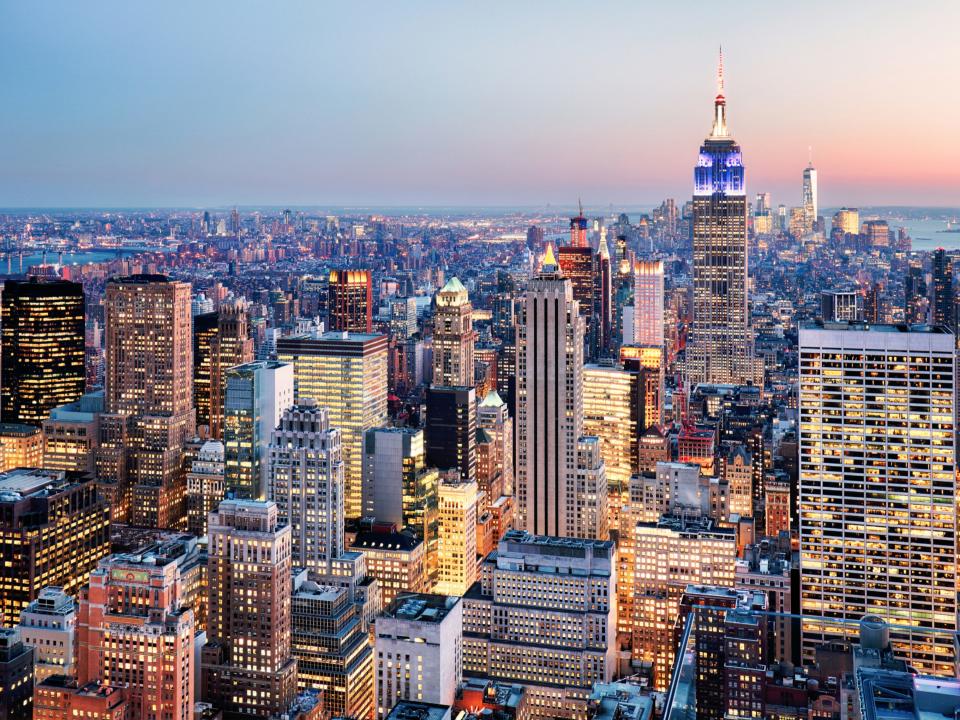Here's how much money you need to make to be middle class in each US state

Business Insider analyzed what qualified as middle class across the US.
Utah, Idaho, and Alaska had the highest share of residents in the middle class.
Meanwhile, New York, Massachusetts, and Montana had the highest percentages of lower-class residents.
These three charts show how many Americans in each state are in the lower, middle, or upper class — and how much income it takes to qualify for each.
A Business Insider analysis of 2022 US Census Bureau data, the latest year for which data is available, found that while 52.7% of Utah's population fell within the middle class, just 42.3% of New Yorkers were in the middle class. The Pew Research Center defines being middle class as earning between two-thirds and double each state's median income.
In Texas, that's between $48,200 and $144,600, and in Minnesota, middle-class residents make between $54,900 and $164,700.
Americans often debate who truly is in the middle class. According to the Census Bureau, the real median household income nationally was $74,580 in 2022. Still, the median income in a state can be as high as $101,000 or as low as $52,700, meaning that the middle class in one state could be either lower or upper class in another.
Even those who are mathematically in the middle class may not feel like they are. Many on the lower end of the middle class are particularly worried about having enough to meet all their daily needs while saving for retirement. Some families recently told BI that having six-figure household salaries wasn't enough, especially given the costs associated with raising kids.
Meanwhile, even for households making well into the six-figure range, many so-called HENRYs — or high earners, not rich yet — have enough for their daily expenses but feel like their savings would be inadequate for an emergency or job loss. Many splurge on what they think matters like experiences but feel constrained, often putting off having kids or buying a home until they feel more financially stable.
In BI's analysis, only three states had half of households in the middle class: Utah, Idaho, and Alaska. Delaware, Wisconsin, and Wyoming had close to 50% in the middle class.
On the whole, the Midwest was relatively close to half, suggesting more households in these states were clustered around the median, with less income dispersion than more populous states like California or New York.
On the flip side, New York, Louisiana, Massachusetts, and Washington, DC, all had below 44% of households in the middle class, meaning that more residents fell into either the upper or lower classes.
The South had the lowest median household incomes, with most in the middle to high $50,000s. States in the Northeast and Mid-Atlantic, such as New Jersey, Maryland, and New Hampshire, had mostly high $80,000s to middle $90,000s.
New York, California, Connecticut, and Virginia had some of the highest percentages of upper-class households, in the 19% to 21% range. Most states were in the 17% to 18% range by that measure, though Alaska, Utah, and Idaho were all below 15%.
To be upper class in states with the 10 highest median incomes, households must make above $178,300 — and must make above $202,000 in Washington, DC. Mississippi had the lowest income needed to be upper class, at $105,400, while West Virginia's figure was $108,600.
These Southern states also had a higher percentage of lower-class households overall compared with other states. New York had the highest percentage at 36.8%, followed closely by Massachusetts, Montana, and West Virginia. Hawaii also had a particularly high percentage, at 36.2%.
Meanwhile, some Western states had percentages as low as 32.5%. Utah, Idaho, and Colorado were in the bottom five for this metric.
Do you feel middle class? Did you move to another state where you could feel more financially secure? Tell this reporter why or why not at nsheidlower@businessinsider.com.
Read the original article on Business Insider

 Yahoo Finance
Yahoo Finance 